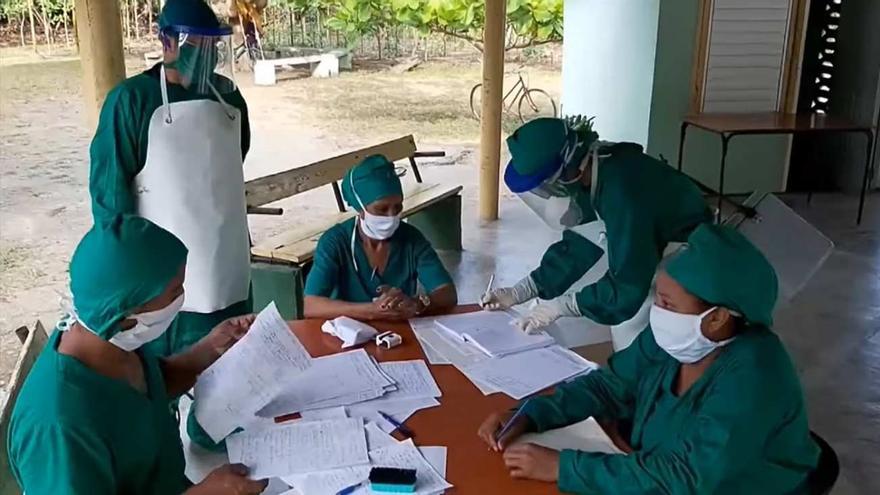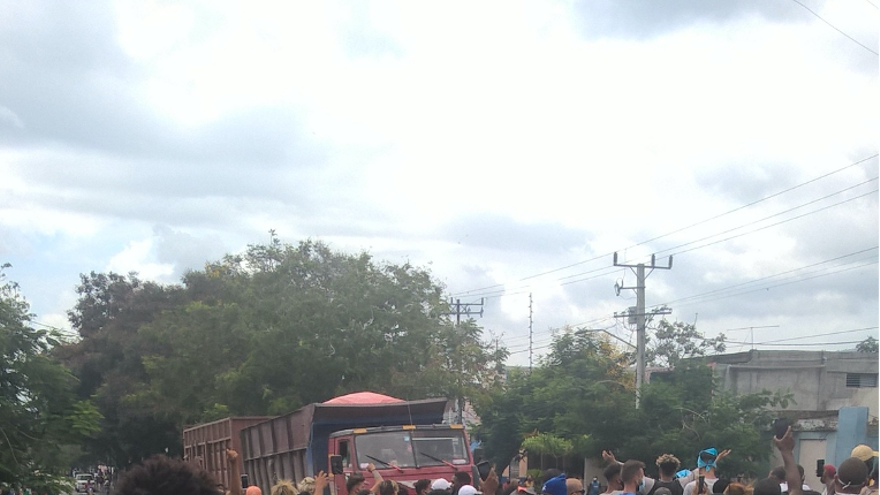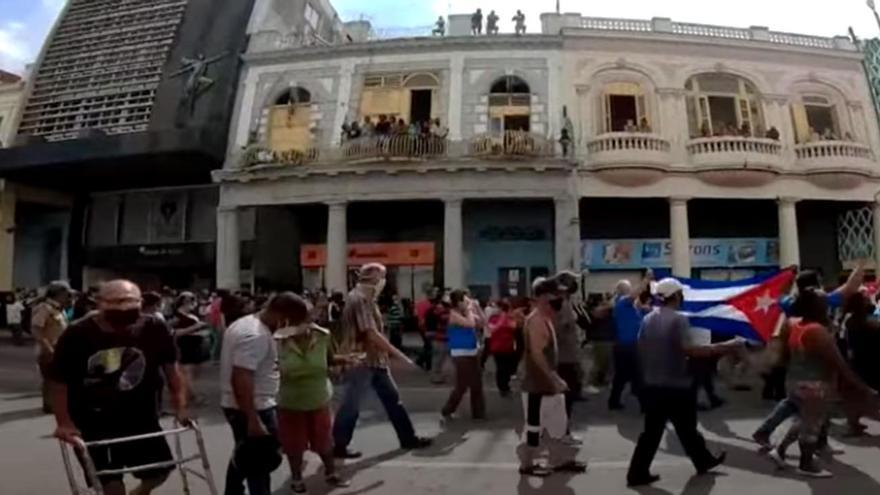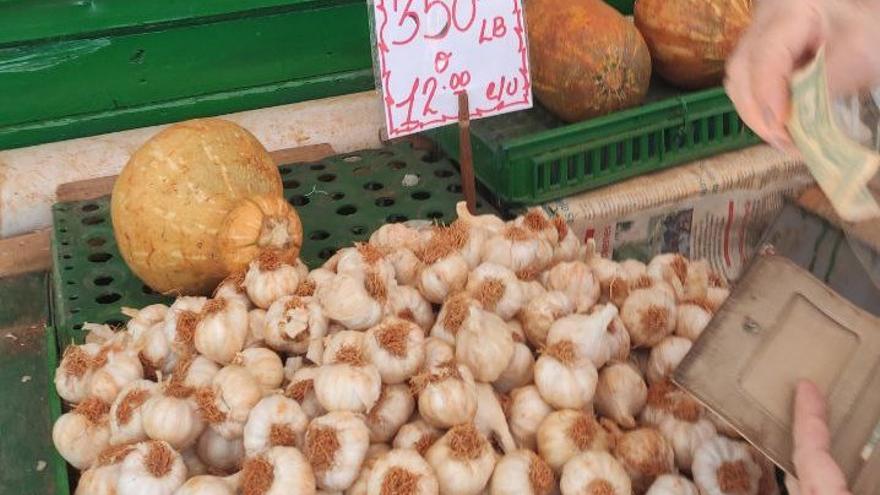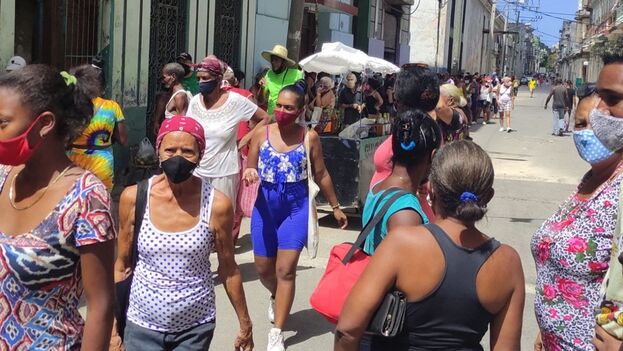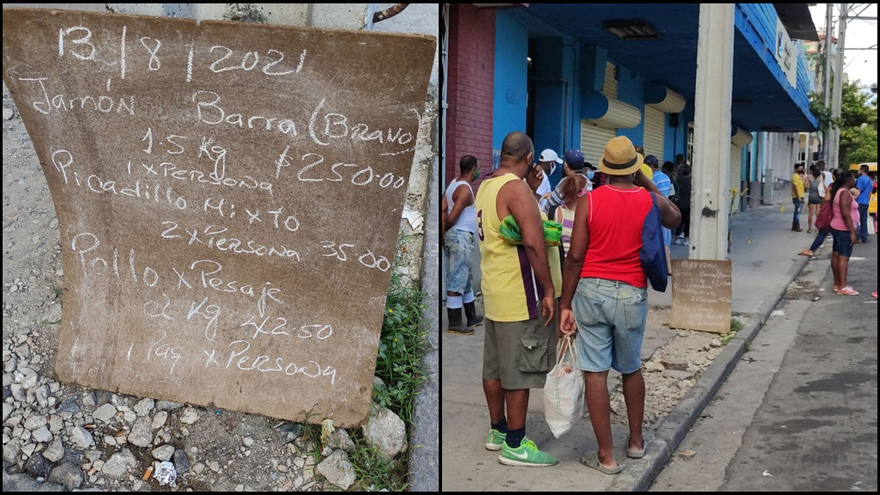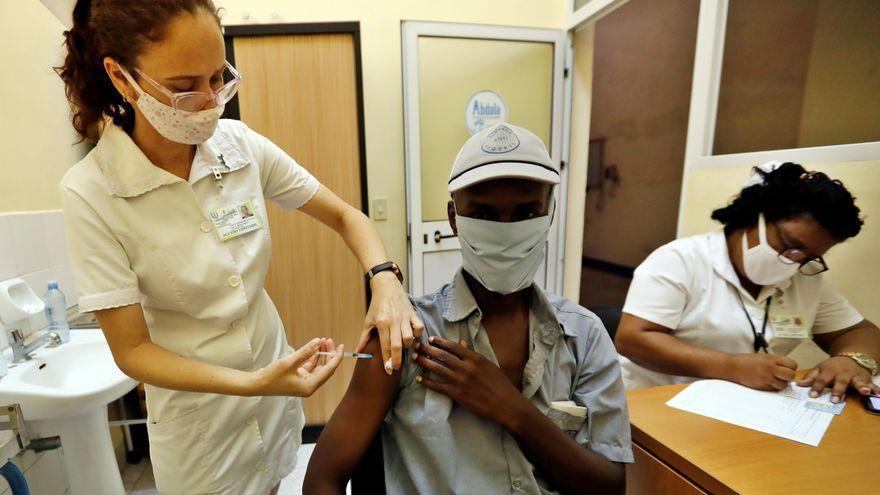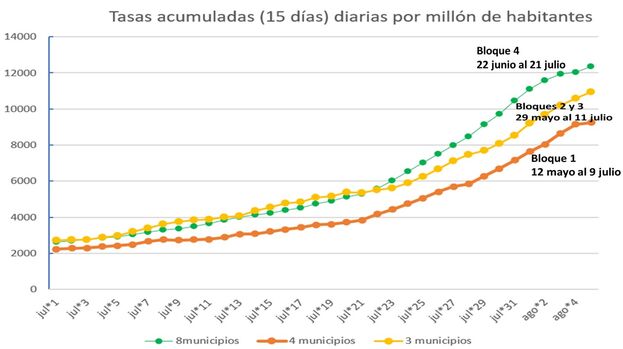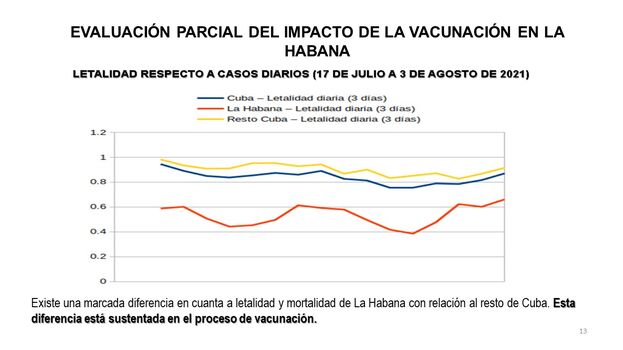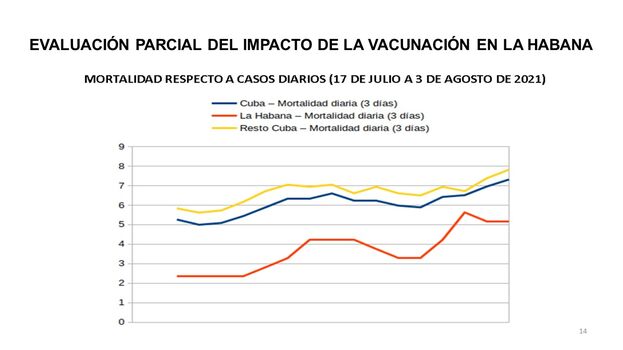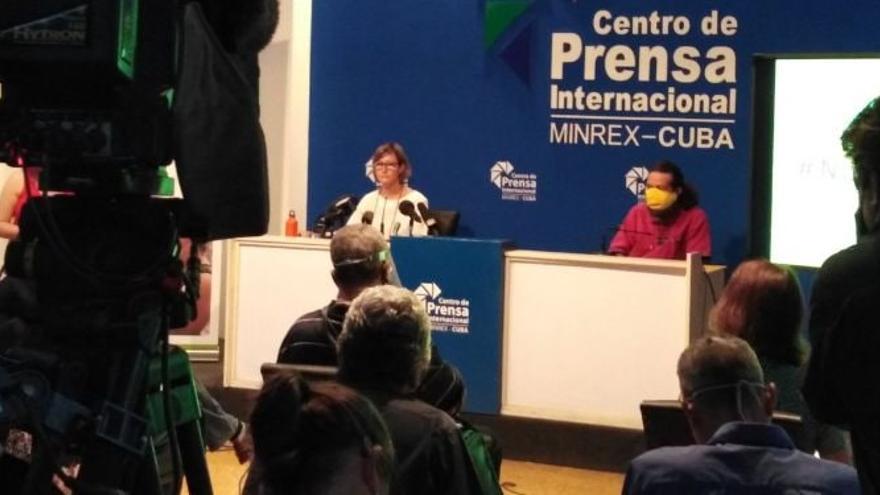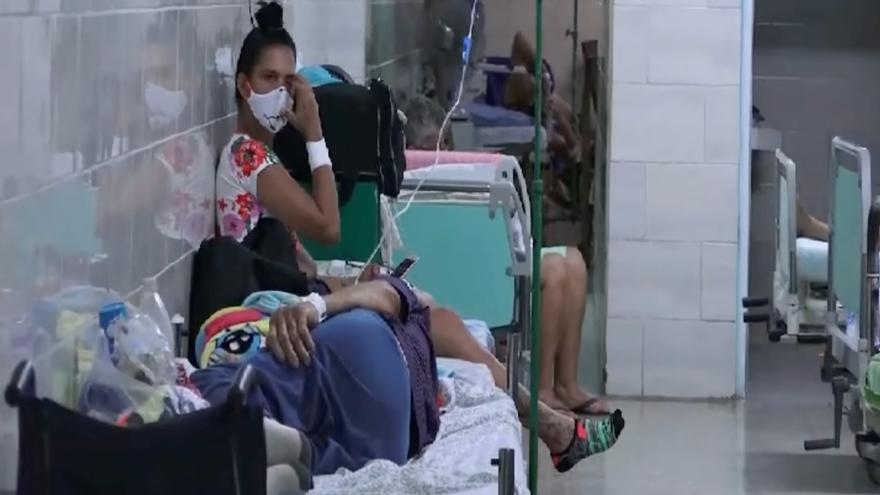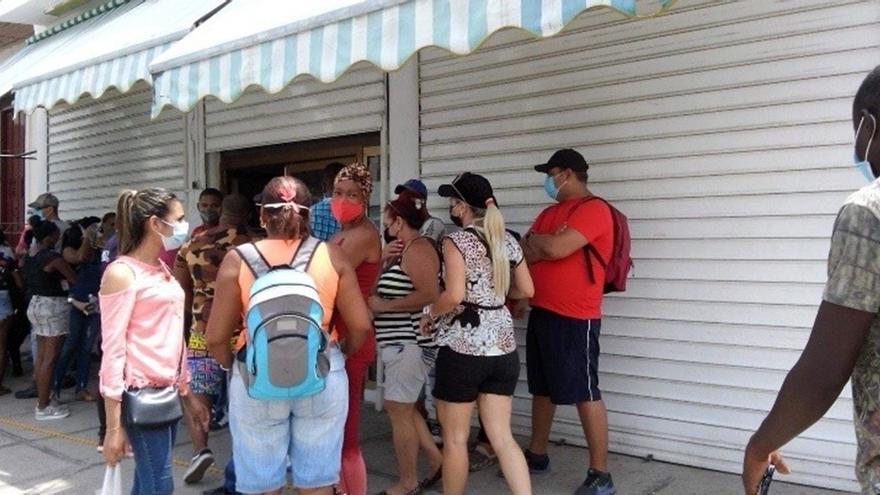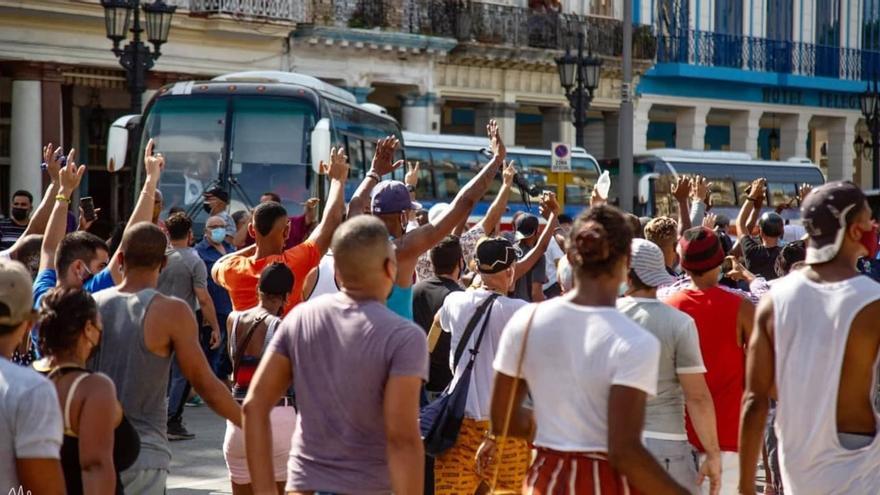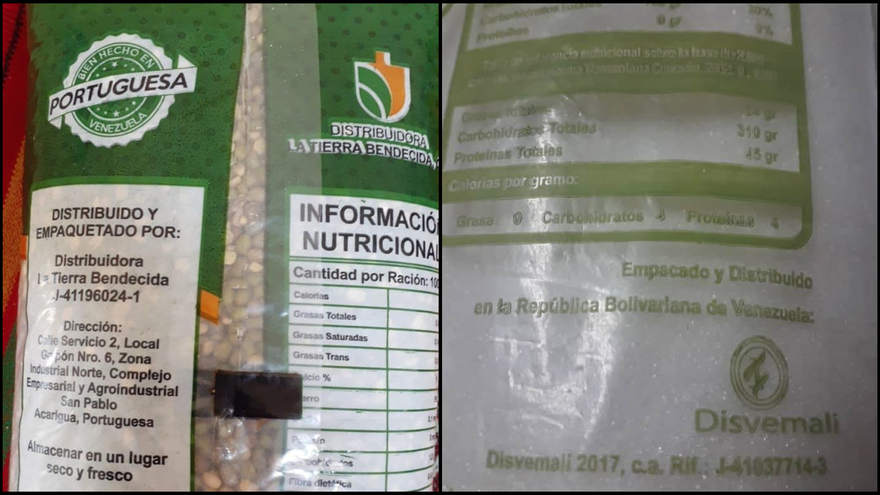I send several messages to my contacts in Guanabacoa with the word “park,” for whoever wants to join.
Walking down Martí Street, I see many people going in the same direction, but the large demonstration has already moved towards Regla (later, in prison, I learned that they reached the Virgen del Camino, where a fierce repression began).
I’m going down Martí towards Regla accompanied by people I don’t know but who have the same objective as me: to get to the big demonstration.
At the traffic light in Guanabacoa, we found a concentration of people related to the Government, some 50 people reciting official slogans. I witness the provocation by one of those citizens in civilian clothes, presumably an agent continue reading
of the DSE (StateSecurity), who pushes back those who were trying to return to Guanabacoa. The intention is, apparently, to close in at the traffic light.
We shouted “Patria y Vida” (homeland and life), “freedom”, “no more hunger,” “down with Díaz-Canel” and even “down with the blockade,” but we have to detour down an interior street to get out to Regla because the concentration of the Government’s like-minded people outnumbers us. We are a small group of about 14 or 15 people.
We headed for Regla and when we couldn’t find the protesters, we decided to turn back. At that moment a man leaves the group under suspicious circumstances. After walking about three more blocks, one of us was stopped by a motorcycle, behind which a patrol is coming.
The agent asks for his ID card and in a very bad way tells him to get into the car. A couple of policemen try to arrest him (the young man lost his phone when he threw it away so it would not be taken away), but four or five of us ripped him out of their hands, telling them that they have no reason to arrest him because we are simply walking towards Guanabacoa.
The policemen threaten to spray us, but we managed to remove the detainee without anyone being hurt and we continued walking. There, we tell ourselves that we must stick together so that we are not arrested or dispersed.
When we arrived in Guanabacoa, we observed two groups: a concentration of people related to the Government reciting old fiery slogans and another that from the opposite sidewalk shouts “Patria y Vida” and “freedom.” The last row of those who shout “Fatherland or Death” were made up of men in civilian clothes armed with large sticks.
I separate myself from the group and try to support the second group, but immediately several women come together to push me to prevent me from approaching. Without using my hands, with my body, four launch themselves against me, while I keep my arms raised and shout “homeland and life” and “freedom.”
One of them takes me from behind and leads me to a pre-prepared car. I escape her by sitting on the ground, raising my arms and putting my hands in an “L” shape [for ’Libertad’]. I shout at them that “thinking differently is not terrorism” while they scold me: “worm,” “betrayer,” “traitor,” “mercenary.”
Then about eight or ten people lift me up and throw me like they’d throw a sack, into a red Lada. Indignant, I stick my head out of the window and shout with all my might several times: “Down with the dictatorship.” I almost lose my voice as the angry crowd insults me.
Inside the car, I manage to call my sister and a friend to inform them of my arrest. At the police station, when I still haven’t finished talking to my friend, they take the phone out of my hands.
Before leading me to the dungeon, they give me the phone back, warning me to turn it off. They collect my belongings, search them and a woman searches me.
In the jail there is no mattress (they only gave it to me at night to sleep), and it is very dirty. They put another girl in with me. We both stayed in that place for 72 hours.
That same night they call me to take a statement. I say that I participated in a peaceful demonstration, outraged by the situation in the country. After that process, they take me back to the dungeon.
After a while they take me out to photograph possible injuries that I have (only some scratches) and the investigator of the Técnico de Alamar interviews me. The official lies, saying that I appeared in a video hitting a policeman, and he tells me that I am accused of “public disorder.” I deny it, it is a heated interview.
They take me back to the dungeon and after a while they take me out again to take fingerprints and a urine sample. I demand that they let me call my family to find out about my children and an officer in civilian clothes tells me that she is going to let me call and gives me a phone card. It’s expired and I can’t make the call.
The next day, I continue to demand that they let me call to communicate with my family members, but I am denied that possibility. Only one day later, my cellmate would do me the favor of calling my mother and telling her that I am in the offices of the National Revolutionary Police of Regla (she thought I was in Guanabacoa). And then she manages to bring me toiletries and a clean change of clothes.
On the third day, at night, they start calling us. They let some of them go with precautionary measures and they tell me and four other young people that they are going to transfer us to another detention center. They return our belongings and take us to the transport vehicle.
Inside the vehicle, with my phone returned, I manage to call my sister, my mother, and a friend to tell them that they are transferring me (they haven’t told me where, so I can’t tell them).
We arrive at Vivac, the detention center south of Havana, they collect our belongings and give us prison clothes and bedding.
Only on the third day of being there, the investigator arrives with a measure of “provisional imprisonment,” to inform us that we will still continue to be detained (there are two other girls from Regla with me).
We are there for four more days.
I am able to talk to my mother thanks to the solidarity of one of the guards on duty (in Vivac, calls are only allowed when you enter and when you leave).
A week later, the investigator comes to pick us up to transfer us to the Alamar Technical Police Unit, where we must remain until the transfer to the prison is completed.
Hygiene in the Técnico cells is terrible, without running water. The guards only connect it twice a day.
In the Técnico I am allowed to see my father for 10 minutes in the presence of the investigator and give him the belongings that they have taken from me and that I cannot have with me. The instructor keeps my phone with him to ’assess it’.
They do a PCR test on all of us.
In total, I am there for seven days, until the negative result of the PCR arrives and on July 28 they transfer me to the women’s prison known as El Guatao.
There we will have to be in isolation for 14 days, in punishment cells with a capacity for eight inmates. There is no running water or windows in the cells. The mosquitoes and the heat are unbearable.
I am there for six days with seven other women, until they call me to announce that they are releasing me under a bail of 2,000 pesos, for a change of precautionary measure.
They transfer me to the Alamar Técnico, where my mother is waiting for me, who has already paid the bail.
The investigator calls me for the next day and tells me to return with my mother to deposit the bail in the bank and to return my mobile.
In total, I spent 23 days in detention for exercising my constitutional right to demonstrate peacefully.
____________
COLLABORATE WITH OUR WORK: The 14ymedio team is committed to practicing serious journalism that reflects Cuba’s reality in all its depth. Thank you for joining us on this long journey. We invite you to continue supporting us by becoming a member of 14ymedio now. Together we can continue transforming journalism in Cuba.
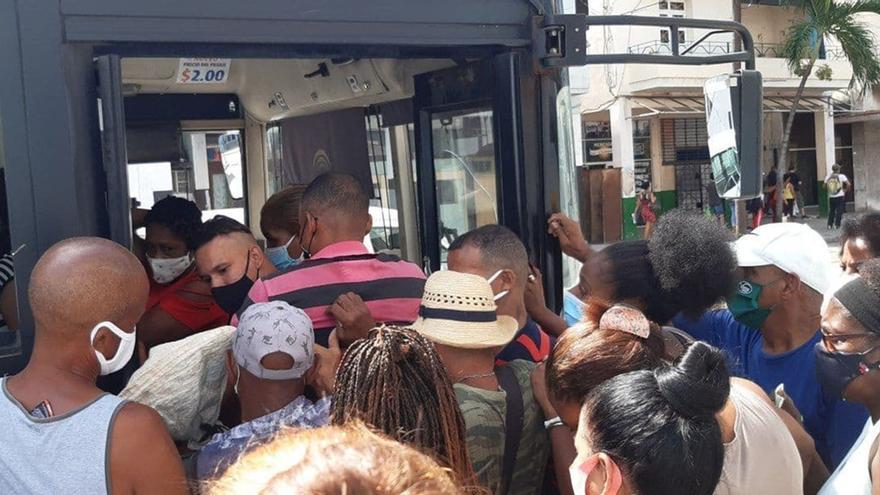
![]() 14ymedio, Natalia López Moya, Havana, 16 August 2021– “There is fuel for the patrol cars, but not for public transport,” a woman shouted indignantly. Like like dozens of other Havanans, she was waiting for a bus at the Ayestarán and 19 de Mayo under the suffocating August sun.
14ymedio, Natalia López Moya, Havana, 16 August 2021– “There is fuel for the patrol cars, but not for public transport,” a woman shouted indignantly. Like like dozens of other Havanans, she was waiting for a bus at the Ayestarán and 19 de Mayo under the suffocating August sun.
